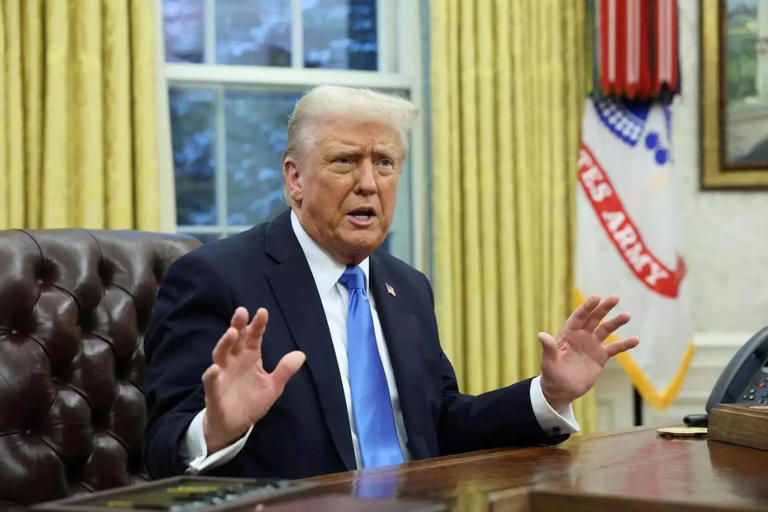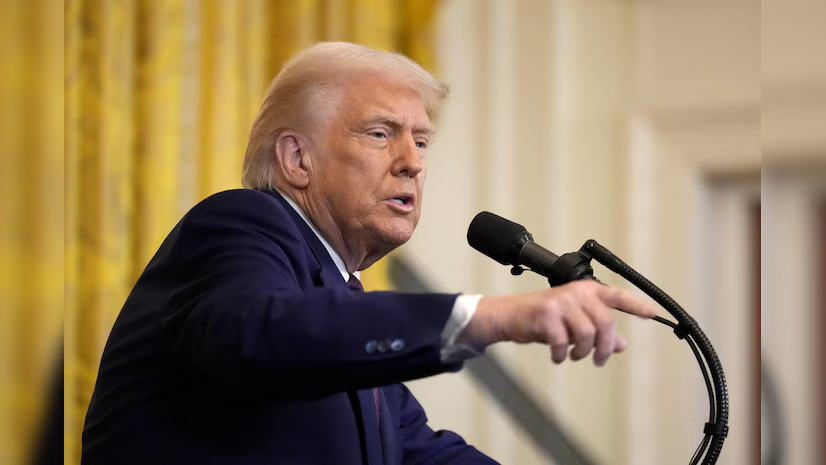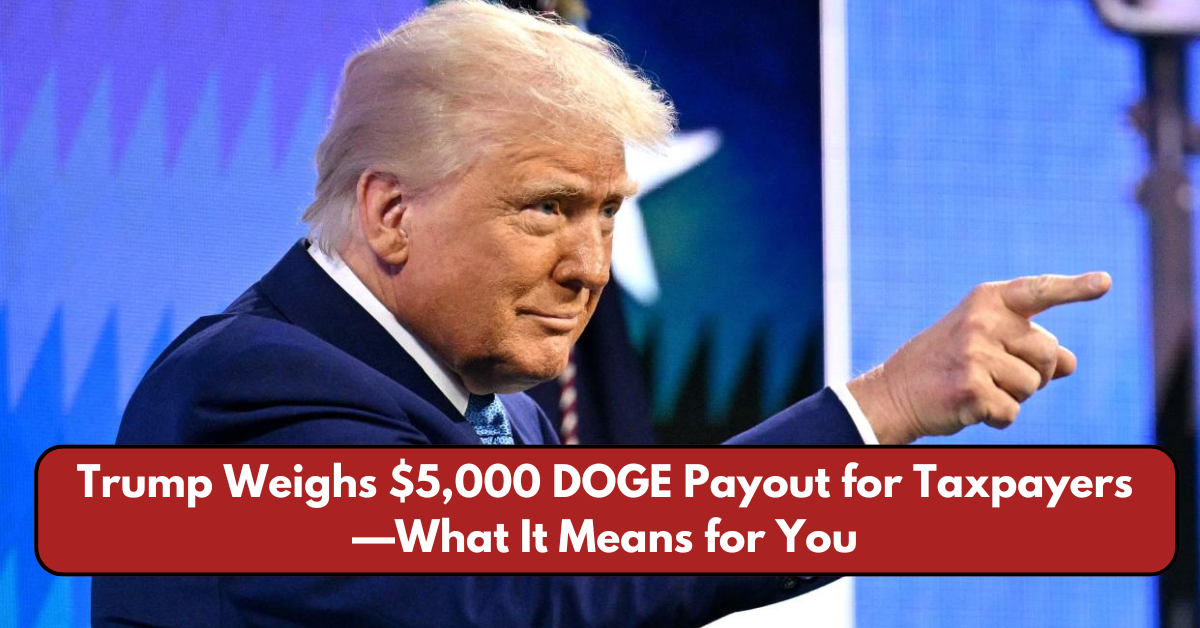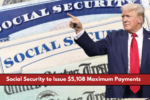Former President Donald Trump is reportedly considering a plan to distribute $5,000 “DOGE dividend” checks to American taxpayers. The proposal, which has gained attention among economic and political circles, suggests that the funds would come from projected government cost-cutting measures under the Department of Government Efficiency (DOGE). However, questions remain about the feasibility of such a policy and its potential economic impact.
What Is the “DOGE Dividend” Plan?
The concept of the DOGE dividend originated from a proposal by investment firm CEO James Fishback, who suggested that a portion of savings from government efficiency measures be directly returned to taxpayers. The plan would allocate 20% of DOGE’s projected $2 trillion in savings toward American households, translating to an estimated $400 billion for distribution.
With approximately 79 million taxpaying households in the U.S., this would equate to a one-time payment of around $5,000 per household.
Trump, along with Tesla and SpaceX CEO Elon Musk, has expressed interest in the idea, seeing it as a way to provide financial relief to Americans while reducing government waste. However, there are numerous challenges that could prevent the plan from becoming a reality.
Can the Government Actually Afford This?

One of the biggest concerns surrounding the proposal is whether the projected $2 trillion in savings can realistically be achieved. The Department of Government Efficiency claims to have saved $55 billion to date, but independent analyses confirm only $2 billion in verifiable cost reductions.
The discrepancy raises doubts about whether the DOGE program can generate the level of savings needed to fund such a large-scale payout. Additionally, any redistribution of government funds would require Congressional approval, adding another layer of complexity to the proposal.
Legal and Political Challenges
The plan would face significant legislative hurdles before becoming law. Since Congress holds the power of the purse, any major reallocation of federal savings would require bipartisan support. Given the polarized political climate, passing such a measure may prove difficult.
Moreover, while Trump has hinted at the plan as part of his 2024 campaign messaging, there is no formal legislative framework in place to support its implementation. As such, the proposal remains speculative at best.
For more information on how government spending and fiscal policies are managed, visit the U.S. Department of the Treasury and Congressional Budget Office.
Economic Concerns: Could This Fuel Inflation?
Economists have expressed concerns that distributing large sums of money directly to taxpayers could contribute to inflation. Similar to previous stimulus checks during the COVID-19 pandemic, a sudden influx of cash into the economy could drive up consumer demand and prices.
“While government efficiency is a positive goal, injecting $400 billion into the economy without corresponding measures to absorb the inflationary impact could have unintended consequences,” said a senior economist at the Brookings Institution.
Given the current economic climate, with the Federal Reserve still working to manage inflation, additional government spending in this manner could create new economic challenges.
Public Reaction and Next Steps

The DOGE dividend proposal has sparked debate among policymakers and the public. Supporters argue that returning savings to taxpayers aligns with conservative fiscal principles and would help struggling American households. Opponents, however, question the viability of the plan and its potential long-term consequences.
As the 2024 presidential election approaches, Trump is expected to further refine his economic policy proposals, including this one. However, without concrete legislative action, the DOGE dividend remains an idea rather than a tangible plan.
For official updates on government spending and efficiency measures, visit the White House Office of Management and Budget and USA.gov.
Conclusion
While the idea of a $5,000 DOGE dividend check may be appealing to many Americans, its implementation faces significant economic, political, and legal obstacles. With no clear path forward in Congress and uncertainty surrounding projected government savings, the plan remains speculative at this stage. As discussions continue, Americans should stay informed and watch for further developments in government efficiency efforts and fiscal policy decisions.
This article has been carefully fact-checked by our editorial team to ensure accuracy and eliminate any misleading information. We are committed to maintaining the highest standards of integrity in our content.

Premlata is a seasoned finance writer with a keen eye for unraveling complex global financial systems. From government benefits to energy rebates and recruitment trends, she empowers readers with actionable insights and clarity. When she’s not crafting impactful articles, you can find her sharing her expertise on LinkedIn or connecting via email at [email protected].




